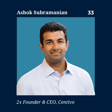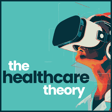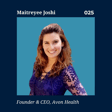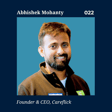
Visual Perception and AI Inference | Penn Professor David Brainard
How does our brain turn limited sensory data into a rich visual experience? In this episode, we sit down with Dr. David Brainard, a professor of psychology at the University of Pennsylvania, to dive deep into the world of visual perception, inference, and computational modeling.
Dr. Brainard shares his journey from physics to psychology and explains how his research explores how the brain processes light, interprets color, and makes inferences about the world around us. We also discuss his work in computational modeling, which is transforming our understanding of retinal function, neural efficiency, and AI-driven vision systems. From cutting-edge research to the future of brain-computer interfaces and neurodegenerative treatments, this episode is packed with fascinating insights into how we see and how AI is learning to see.



















